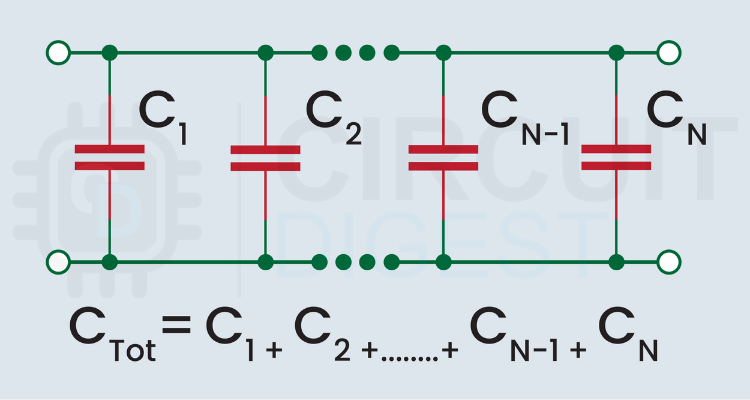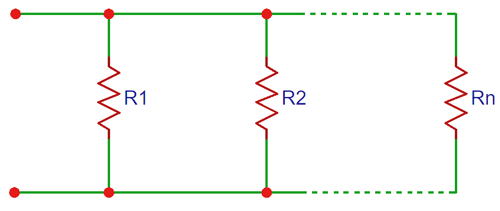The Series Capacitor Calculator is designed to simplify the process of evaluating the total capacitance when multiple capacitors are connected in series within an electronic circuit. Understanding how to calculate capacitance in series is fundamental for circuit designers, as the behaviour of capacitors in this configuration differs significantly from parallel arrangements. When capacitors are connected in series, they follow a unique mathematical relationship where the reciprocal of the total capacitance equals the sum of the reciprocals of individual capacitances:

where Ctotal represents the total capacitance, and C1, C2,..., Cn are the individual capacitances in farads (F).

In a series capacitor formula, the total capacitance is always smaller than the smallest individual capacitor value. When capacitors are in series, they all carry the same current and store the same amount of charge (Q), but the voltage divides among them. Since C = Q/V, and Q remains constant while V increases, the total capacitance decreases.
Example of Calculating Capacitance in Series
Example 1: Two Capacitors in Series
Problem: Calculate the total capacitance formula in series with 10 µF and 22 µF connected in series.
Solution:
1/C_total = 1/C₁ + 1/C₂
1/C_total = 1/10 + 1/22
1/C_total = 0.1 + 0.0455 = 0.1455
C_total = 1/0.1455 = 6.87 µF
Example 2: Three Equal Capacitors
Problem: Find the total capacitance of three 15 µF capacitors in series.
Solution:
For equal capacitors: C_total = C/n
C_total = 15 µF / 3 = 5 µF
Example 3: Voltage Divider Application
Problem: Two capacitors (100 nF and 220 nF) in series across 12V. Find the voltage across each.
Solution: First, find the total capacitance:
1/C_total = 1/100 + 1/220 = 0.01 + 0.00455 = 0.01455
C_total = 68.7 nF
Voltage across C₁: V₁ = V_total × (C_total/C₁) = 12 × (68.7/100) = 8.24V
Voltage across C₂: V₂ = V_total × (C_total/C₂) = 12 × (68.7/220) = 3.76V
Our other projects also include circuits with capacitors connected in series, connecting Li-Ion cells in series.
Frequently Asked Questions in Calculating Capacitance in Series
⇥ Why is the total capacitance less than the smallest capacitor?
In series, capacitors share the same charge but divide the voltage. This effectively reduces the total charge storage capability relative to the applied voltage, resulting in lower capacitance.
⇥ When would I use capacitors in series?
- Common applications include:
- Increasing the voltage rating
- Creating voltage dividers for AC signals
- Reducing total capacitance for timing circuits
- High-voltage applications where single capacitors aren't available
⇥ What happens to ESR in series capacitors?
ESR (Equivalent Series Resistance) values add directly in series, just like regular resistors. This can impact high-frequency performance and power dissipation.
⇥ Can I mix capacitor types in series?
Yes, but be cautious. Different capacitor types (ceramic, electrolytic, and film) have different characteristics. Ensure voltage ratings are adequate and consider leakage current differences in electrolytics.
More Handy Calculators for Passive Components
Take your circuit design further with these useful calculators for key components that shape current and voltage behavior.
Capacitor in Parallel Calculator
The Capacitor in Parallel Calculator is designed to determine the total capacitance when multiple capacitors are connected in parallel within an electronic circuit.
Resistors in Series Calculator
This series resistor calculator calculates the total resistance value for all the resistors connected in series.
Resistors in Parallel Calculator
This parallel resistance calculator calculates the total resistance value for all the resistors connected in parallel.




